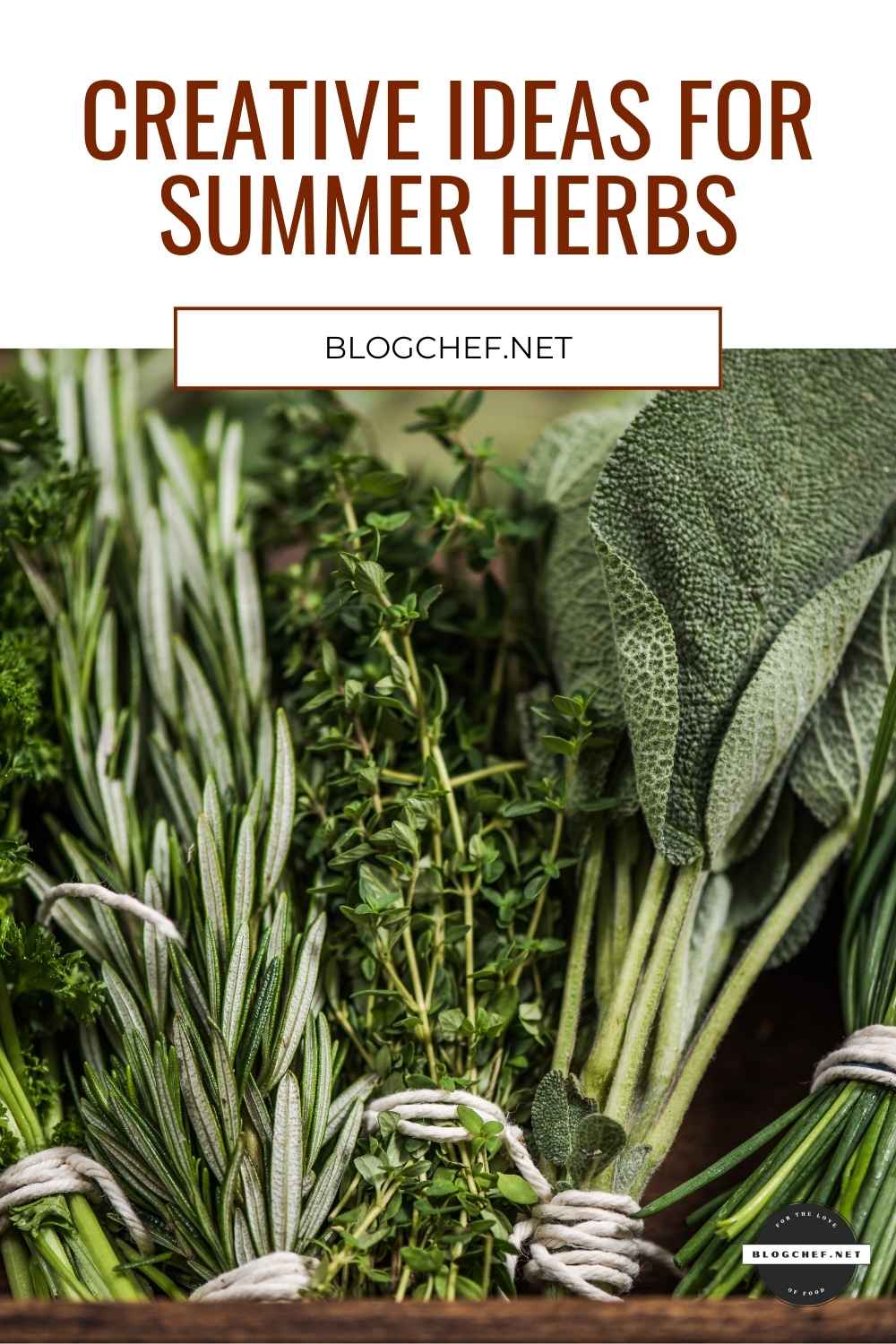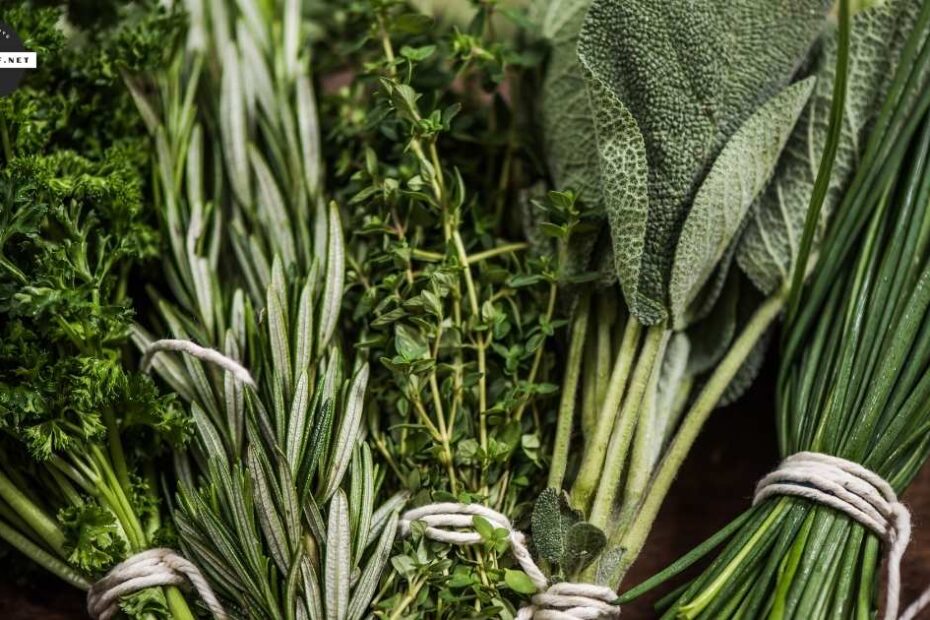Your summer herb garden can do more than flavor a cocktail or top a pizza. These plants can become the base of meals, not just a final flourish. This isn’t about fancy restaurant tricks or complicated techniques, but using what you’re already growing in ways that change how food tastes and feels.

Whether you’re dealing with an overgrown mint patch or a basil plant that’s producing faster than you can use it, you can turn abundance into an advantage. These are simple methods, but the results will have people asking for your recipes. Here’s how to make your summer herbs work harder for you.
Reimagining summer herbs in everyday cooking
Stop treating herbs like decoration and start cooking with them like vegetables. Herbs contribute texture, color and layers of flavor that single seasonings can’t match.
Star ingredients in salads
Forget the lettuce and build your salad around herbs instead. Use your herbs in salad-sized portions, not seasoning amounts.
Fill your bowl with two cups of a mixture of fresh cilantro and parsley, then add cucumber and tomatoes. Try equal parts mint and basil as your greens, and then top them with fruit and cheese.
Different herbs provide different textures. Basil tears into silky ribbons, cilantro stems add crunch and oregano brings structure. Use contrasting mouthfeel for more interesting bites.
Dips and spreads
Herbs create creamy, flavorful bases when blended into dips and spreads. Fresh herbs work better than dried ones in this case. They blend easily and keep their color, so the dip stays fresh-looking.
The process is straightforward: add fresh herbs to soft cheese or yogurt, then blend until smooth and creamy. The herbs’ oils distribute evenly, creating a consistent flavor throughout.
Blend basil with cream cheese and garlic to make a spread for bagels and crackers. Mix cilantro into Greek yogurt with lime juice for a delicious dip. Combine dill with sour cream and chives for a dip that actually makes raw vegetables appealing.
I love folding chopped basil or dill directly into a potato salad or stirring fresh mint into a yogurt dip. It gives the whole dish a burst of flavor and makes the herbs feel like a main ingredient, not an afterthought.
— Bella Bucchiotti, xoxoBella
Summer Herb-infused main dishes
Start cooking with herbs from the beginning, not just as a finishing touch. These main dishes work because herbs are an integral part of the cooking process, not just sprinkled on at the end.
Try stuffing whole herb sprigs inside proteins before cooking. Push rosemary branches into chicken cavities or slide basil leaves under fish skin. As the meat cooks, the herbs release their oils from the inside out.
Marinate the chicken in a cilantro-lime mixture, then grill and top with fresh herb salsa. Mix chopped basil and mint into meatballs before cooking, then serve with cooling yogurt sauce.
Begin with familiar pairings, such as basil and tomato or dill and fish, and then branch out. Use enough herbs so you can actually taste them, not just detect hints of flavor.
Summer herbs in beverages
While herbs have become standard in cocktails, their untapped potential lies in the drinks you make every day. Herbs create summer beverages that taste distinctly different from anything you can buy.
Mocktails and non-alcoholic infusions
Herbs make alcohol-free drinks taste as complex as cocktails. Prepare herbal water infusions by steeping mint, basil or tarragon in cold water for several hours. Use these as mixers instead of plain water for subtle herb flavors.
For immediate results, muddle herbs directly with fruit and citrus juice, then top with sparkling water. The herbs release oils on contact, creating instant flavor.
Try unexpected combinations, such as sage with grapefruit or tarragon with cucumber. If you grow edible flowers, pair lavender with lemon balm or chamomile with mint.
Iced teas and lemonades with herbal twists
Add herbs to summer drinks to make them taste complex and intriguing. Combining herbs and fruit creates balanced drinks that taste elevated but aren’t complicated to make.
Try mint with cucumber in iced green tea or add basil to berry-flavored black tea. Mix thyme with citrus in homemade lemonade. Combine sage with apple in cold-brewed teas.
These aren’t subtle hints of flavor, so don’t hold back. These drinks should taste like herbs, not just hint at them.
One of my favorite tricks is mixing chopped dill into tuna salad with a squeeze of lemon. It totally transforms a simple lunch into something special! Herbs bring so much freshness and flavor, and using them generously makes even basic dishes feel vibrant and summery.
— Kristin King, Dizzy Busy and Hungry
Herbs for sweet and savory baking
Herbs work in baking because heat releases their oils, just like it does with traditional spices. The difference is that fresh herbs provide flavors you can’t get from dried seasonings.
Herbs in breads and pastries
Fresh herbs add flavor and aroma that make homemade baking feel bakery quality. Chop herbs finely so they distribute evenly throughout the batter and dough. Large pieces create uneven flavors and can make textures seem off.
Fold chopped rosemary into the focaccia dough or sprinkle it over dinner rolls before baking. The herb’s piney flavor creates bread that smells incredible while it bakes.
Try thyme in strawberry scones for an unexpected earthy note that balances sweet fruit. Add finely chopped basil to lemon muffins for a combination that shouldn’t work but does. Sage brings earthy complexity to pastries, especially combined with brown butter.
Mix basil into savory herb breads alongside sun-dried tomatoes. The combination creates Mediterranean flavors that work well with soup or as sandwich bread.
These aren’t complex techniques; instead, you’re just adding chopped herbs to recipes you already make. But the results taste distinctly different from store-bought versions.
Unique desserts that feature summer herbs
Herbs can make desserts taste like nothing you’ve had before. These combinations work because herbs add savory elements that prevent desserts from being one-dimensional and sweet. This contrast makes people pause and try to identify the unexpected flavor.
Start with proven pairings. Basil complements strawberries and stone fruits; thyme enhances peaches and apricots, and mint pairs well with lime in sorbets and in fruit salads. For more adventurous options, try parsley in lemon bars. The herb adds fresh, slightly peppery notes that brighten citrus desserts. Lavender works well in creamy applications, such as panna cotta or infused whipped cream for berries.
The goal is to create desserts that surprise people in a good way. Adding sophisticated twists makes familiar desserts memorable.
Summer herbs
Summer herbs deserve better than garnish duty. Treat them like ingredients and blend them into dips, bake them into bread, toss them in salads or muddle them into drinks. Your garden grows fast, so use it just as boldly.
Anne Jolly is a writer and creator of the Upstate Ramblings blog, which explores America’s unique food culture. Her work on culinary trends and food traditions has appeared in major publications including MSN, Fortune, The Mercury News, The Seattle Times, St. Louis Post-Dispatch and Education Week. When not writing, she experiments with new recipes and discovers local food gems in upstate New York.
This article originally appeared on Food Drink Life.
